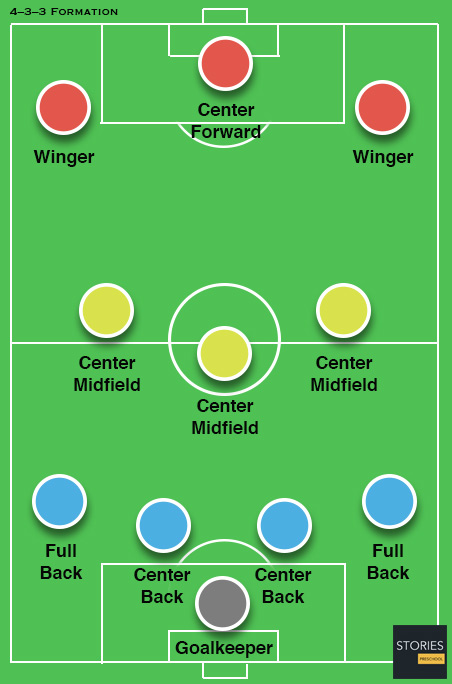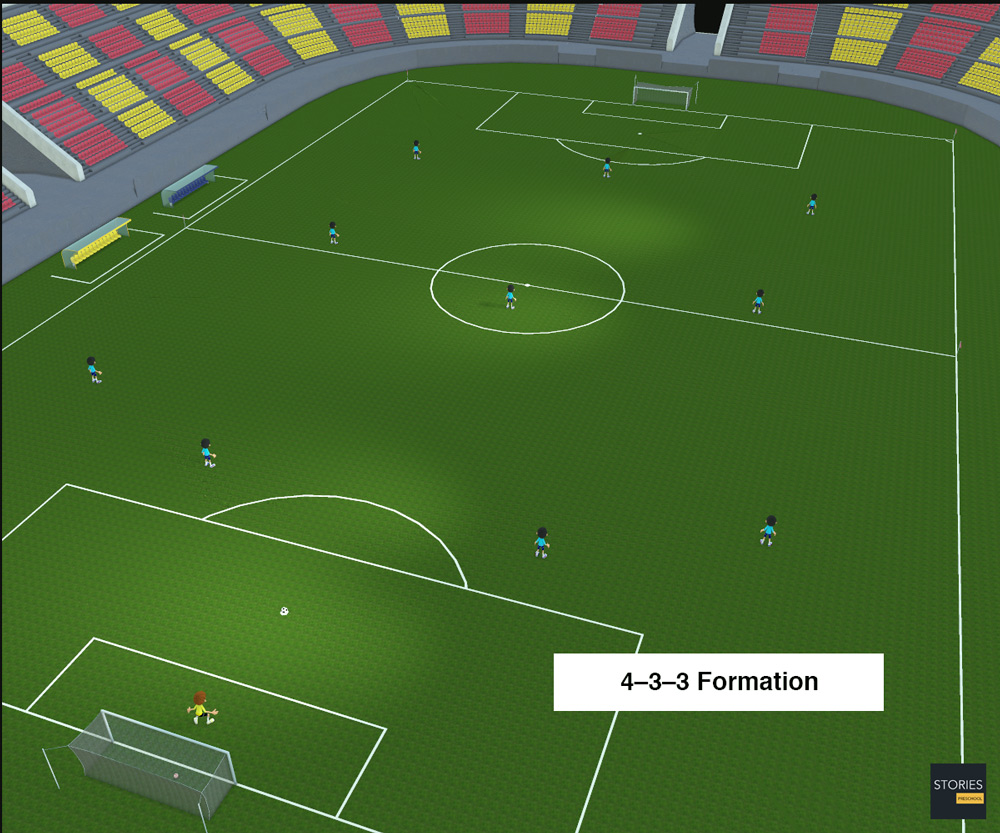Soccer

4–3–3 Formation
The 4–3–3 was a development of the 4–2–4, and was played by the Brazilian national team in the 1962 World Cup, although a 4-3-3 had also previously been used by the Uruguayan national team in the 1950 and 1954 World Cups. The extra player in midfield allows a stronger defense, and the midfield could be staggered for different effects. The three midfielders normally play closely together to protect the defense, and move laterally across the field as a coordinated unit. The three forwards split across the field to spread the attack, and may be expected to mark the opposition full-backs as opposed to doubling back to assist their own full-backs, as do the wide midfielders in a 4–4–2. When used from the start of a game, this formation is widely regarded as encouraging expansive play, and should not be confused with the practice of modifying a 4–4–2 by bringing on an extra forward to replace a midfield player when behind in the latter stages of a game. This formation is suited for a short passing game and useful for ball retention.

A staggered 4–3–3 involving a defensive midfielder (usually numbered four or six) and two attacking midfielders (numbered eight and ten) was commonplace in Italy, Argentina, and Uruguay during the 1960s and 1970s. The Italian variety of 4–3–3 was simply a modification of WM, by converting one of the two wing-halves to a libero (sweeper), whereas the Argentine and Uruguayan formations were derived from 2–3–5 and retained the notional attacking centre-half. The national team that made this famous was the Dutch team of the 1974 and 1978 World Cups, even though the team won neither.
In club football, the team that brought this formation to the forefront was the famous Ajax team of the early 1970s, which won three European Cups with Johan Cruyff, and Zdenek Zeman with Foggia in Italy during the late 1980s, where he completely revitalized the movement supporting this formation. It was also the formation with which Norwegian manager Nils Arne Eggen won 15 Norwegian league titles.
Most teams using this formation now use the specialist defensive midfielder. Recent famous examples include the Porto and Chelsea teams coached by Jose Mourinho, as well as the Barcelona team under Pep Guardiola. Jose Mourinho has also been credited with bringing this formation to England in his first stint with Chelsea.

SPORTS

RESOURCES
This article uses material from the Wikipedia articles "Association football" and "Formation (Association football)", which is released under the Creative Commons Attribution-Share-Alike License 3.0.
© Stories Preschool. All Rights Reserved.












